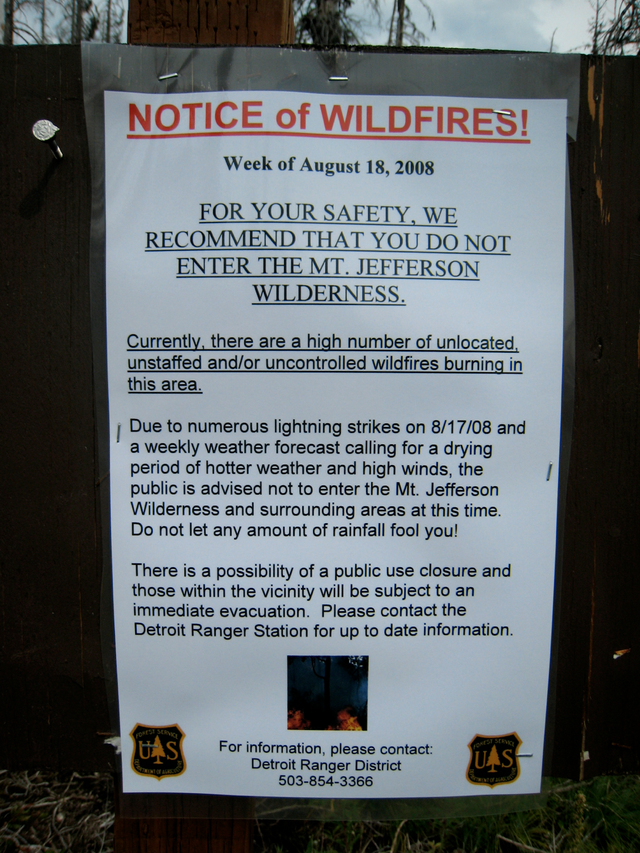Trying to discover the success rate for thru-hiking the Pacific Crest Trail is problematic with estimates ranging anywhere from 20-60%. For example, the Pacific Crest Trail Association (PCTA) has a FAQ that states:
Perhaps 500-800 people head out intending to hike the whole trail in a year. Perhaps 60 percent finish.
Their list of finishers includes the following stats for the past seven years:
- 2012 - 353 finishers
- 2011 - 150 finishers
- 2010 - 197 finishers
- 2009 - 83 finishers
- 2008 - 89 finishers
- 2007 - 90 finishers
- 2006 - 134 finishers
That is quite a range. Naturally, there are hikers who never requested a Pacific Crest Trail Permit from the PCTA and/or never report that they finished. Other websites have used trail journals as an indicator and stated that a normal year may have 300-500 people attempt a thru-hike with a success rate in the range of 20-40%. One of my guidebooks casually tossed out 180 as the number of people who finish in an average year. Suffice to say, no one knows for sure how many attempt and how many finish.
Thanks to Cheryl Strayed's Wild book, I expect more people to be hiking it this year and also an increase in the number of people who actually know about the trail. Here in Port Townsend, I think at least half of the people who I have talked to about the trail have mentioned the book. The power of Oprah is indeed strong.
What I do know for sure is that the spreadsheet I received from Scout and Frodo last month indicated that they alone were hosting over 130 potential thru-hikers at their home in San Diego this year. That indicates to me that we are going to have a bumper crop of hikers this year.
Honestly, I think I have a 50/50 chance of finishing the first month, mostly depending on how my body reacts to the stresses of 20+ mile days and caloric deprivation. With my knee being my greatest anxiety. If I make it that first month, I think that one month shakedown cruise will prove I am physically capable and I should be golden the rest of the way.
Still, there are other things I am keeping an eye on...
The Sierras are experiencing their second low snow year in a row with the average "Snow Water Content" being around 50% of normal. While that bodes well for crossing the high passes, it is a bit more problematic when you remember that the melting snow feeds the water sources at lower elevations. It is a balancing act that has thru-hikers aiming to enter the Sierras around June 15th during an average snow year. According to Postholer the recommended date for entering the Sierras this year is June 5th. I am continually glancing at the PCT Water Report website, and the current reports make me think that I will be essentially traveling between spigots and water tanks in parts of Southern California (spigot hopping!). And, there are definitely going to be days when I start with 6 litres of water in my pack. In hot desert weather that 13 pounds are going to make my days significantly tougher. But, one does need to drink. Here's hoping for a spring storm or two.
Speaking of water, or lack thereof, California and Oregon seem to be rather prone to forest fires in the summer. When I was section hiking the PCT between Sisters, Oregon and Cascade Locks five years ago, I remember seeing hills covered in blackened, dead trees and walking through a burnt patch that was still smoldering. They actually recommended not entering the Jefferson Wilderness at all.

Thankfully, a lovely storm system came in and doused pretty much everyone for three days in cold, miserable rain. So, a section of the trail could easily be closed off because of fires. Flip flopping or skipping to return later might be an option, but if things go poorly it could mean not finishing the entire trail. The decrease in the Forest Service's fire fighting budget because of the sequester is not encouraging.
And finally and most likely, there are injuries and mental/physical exhaustion. I am a big fan of North Star and Shutterbug's Wandering the Wild website. These two PCT alums just started hiking the Appalachian Trail and right off the bat Shutterbug developed a knee problem. Shin splints, twisted ankles, knee pain: the trail is unkind and a problematic injury can happen to anyone. Combine a painful injury with long days and not enough food, and it is enough to make anyone quit. I hear Northern California with its relative lack of towns is particularly problematic for people. I know that I for one have a hard time reining myself in and could easily burn out or break down by not taking adequate rest days.
None of these are huge, worrisome concerns but they are on the back burner in my mind. Expectations are an important part of making a long trip go well and I am trying to manage them as best I can before starting off.